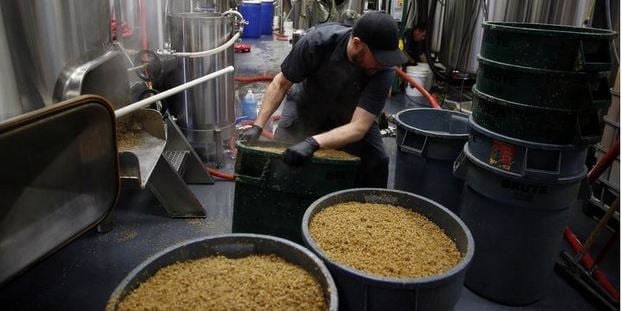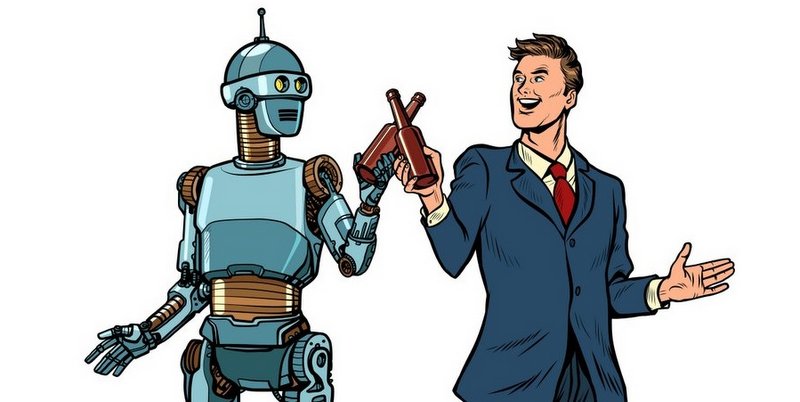
The short-term future of the craft beer industry is starting to concern people. I’m not here to counter any of their concerns, but instead spread the word on a completely different outlook for the future — a future in which energy is super cheap and no one has to drive themselves — a future maybe more favorable to craft breweries. A future that might start as early as 2020. Let’s take a look, Andy!
First, some concerns
The BA’s mid-term statistics showed lessened growth and the projected number of closings rising (which was bound to happen — openings keep rising too). The BA growth number was rosier than IRI Group scan data, which shows craft as up only 1 percent at mid-year. BA economist Bart Watson explains why here if interested.
Tom Acitelli, author of The Audacity of Hops: The History of America’s Craft Beer Revolution, wrote a column for the Washington Post, pointing to a possible collapse of craft beer that has less to do with beer being a fad and more to do with the weakness of the broader economy, which is being propped up by consumer spending, cheap financing and tax cuts.
In the 1990s, what turned out to be another decade-long economic expansion lifted craft beer to dizzying new heights. It entered the 1990s as a passing fad, but the larger wave of investment and spending helped it expand right along with the economy. Toward the end of the decade, there were more than 1,500 craft breweries and brewpubs, an improbable milestone.
Then the keg went dry. Loans on new breweries and brewery expansions came due. Breweries looked around and found fewer customers than a few years before. Banks stopped lending. The economy overall started to wobble. Hundreds of breweries closed or reduced their footprints between 1999 and 2001.
The context does look eerily similar to what happened in the ’90s, but this time around there may be another completely different seismic change coming for the U.S. economy and everyday life that renders all prior precedence moot.
Clean energy, transportation disruption explained
Tony Seba is a Silicon Valley entrepreneur, an instructor in Entrepreneurship, Disruption and Clean Energy at Stanford’s Continuing Studies Program and author of Clean Disruption of Energy and Transportation. His work focuses on clean energy, entrepreneurship and market disruption of the world’s major industries, such as energy, transportation, infrastructure, finance and manufacturing. He lays out a case in the presentation above, with compelling evidence, that the transportation system and electrical grid are going to be disrupted, starting as soon as 2020.
“Every single technology has been adopted as an S curve. It is never a line,” Seba said. Consider the fact that cars replaced the horse and buggy in a mere 10-year span — and that’s in the days of, well, horse and buggy. His research shows how the tipping point for disruption has always led to a sharp S-curve trajectory, which is only getting sharper in our current time. “S curves are accelerating. It takes months or a year or two. More like J curves now. But yet there are still just straight lines in projections.”
His research studying disruption over the years reveals that technology plays a big part, but technology alone doesn’t cause disruption on the level of the smartphone or automobile. The technology needs to converge with new business models. Seba makes the case that batteries, electric vehicles, ride-sharing, autonomous vehicles and solar energy are on a path to converge in the 2020s — making it the most disruptive decade in history — and totally remaking energy and transportation infrastructure. And by 2030, it will be done.
The end scenario in 2030 is a world with little to no car ownership because the economic argument for ride-sharing everywhere via fleets of automated ride services will make too much economic sense, and solar energy and battery storage will account for 100 percent of electricity generation. I really urge you to check out the presentation and see how convinced you are about this disruption occurring. If you feel convinced, I submit this new world would be an even better one for brewery businesses to thrive.
What’s this have to do with craft breweries?
A society of people hailing automated rides as their top transportation option means drunk driving is not a concern. This could mean people in general just leave their house more and stay out later. On-premise sales are already a growth area for craft beer, so wouldn’t this solidify it even more?
I asked Watson if there were any early signs pointing to ride-sharing already adding to on-premise sales growth (as that category continues to climb). There isn’t much in the data to draw concrete conclusions, but in this look at on-premise growth last year, Mike Ginley of Next Level Marketing does think there is an “Uber Effect,” noting that the average 2.4 drinks order jumps to 3.5 when consumers use ride share services. Thirty-eight percent of all consumers use ride sharing services regularly when they go out to eat and drink, compared to 56 percent of Millennials who do so.
“What that doesn’t really show is whether those ride sharing consumers would have taken a taxi in the past, etc.,” Watson says to pour some water on our heads. “So it’s hard to know if this is a difference between consumer groups — i.e., a reverse causality where people who were going to drink more anyway are more likely to take ridesharing services — or actually a shift over time.”
But our previous understanding of how and when people venture out for drinks might be out the window in this scenario. More people would have better access to more places if transportation is cheaper and easier to use. Stands to reason this can’t be any worse for on-premise business models.
But optimism for breweries isn’t just people daring to drink more in public. Tony’s research shows that this disruption in energy and transportation will happen because of purely economic reasons. Cheaper energy, less spending on transportation (gone are car payments, gas, oil changes, all that blah stuff), more time and productivity all means more consumer spending too. Seba’s projection is 6,000 extra dollars in a family’s pocket a year after doing all the math.
“By 2020, the average American household could have one full day of storage for $1 a day,” Seba says. “But you don’t need a full day of storage, just need four hours. This will cost $6 per month.”
There’s also the business benefits. Abundant solar + storage systems could drastically lower brewery operating costs with cheaper energy. The Department of Energy’s National Renewable Energy Laboratory says that — today — 25 percent of businesses could save money just by adding a storage system to their building to reduce their bills, to the point that new companies are popping up to offer storage as a service -– no technology risk to the building owner, just pay for the service and split the bill savings with the provider.
Right now solar is still only 2 percent of our grid’s generation mix, so how could it get to 100 percent ever? Solar has come down in cost 11.5 percent per year since 1970 (300x). Every other generating source has gone up in price 6x to 16x from 1970. Since 1990, the market has grown 40 percent per year and doubled every two years. So, extend the trendline (doubling every two years), and you get to more than 100 percent in 12 years.
“At some point soon rooftop solar + batteries will be cheaper than the cost of transmission,” Seba says. “So even if the utilities generate at zero, when you add cost of transmission, it will still be more expensive than unsubsidized solar + storage. At that point it’s in everyone’s best economic self-interest to add solar + storage.”
If you think all of that is total nonsense, I won’t argue with you. But in closing I’ll just share this quote from Seba’s presentation.
“Disruptions happen from the outside, incumbents are not the ones traditionally who enable disruptions because they are addicted to the cash flow,” Seba says. “There’s a reason they are incumbents. They either don’t see it or dismiss it because main stream analysts tell them not to worry about it.”





Leave a Reply
You must be logged in to post a comment.